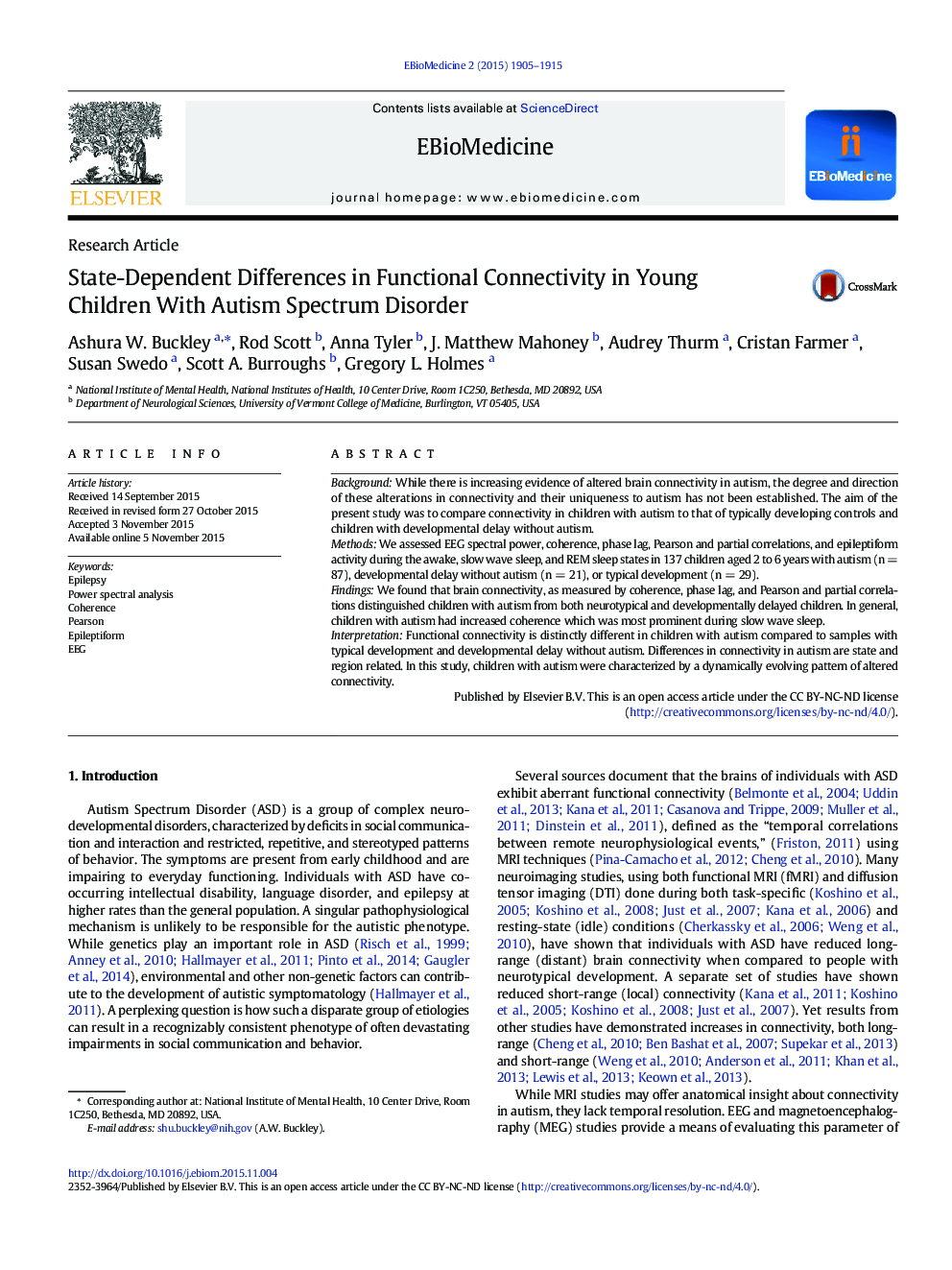| کد مقاله | کد نشریه | سال انتشار | مقاله انگلیسی | نسخه تمام متن |
|---|---|---|---|---|
| 2121069 | 1085768 | 2015 | 11 صفحه PDF | دانلود رایگان |
• We used EEG to examine the connectivity in young children in awake, rapid eye movement, and slow wave sleep (SWS) states.
• Differences in coherence between the autism group and the other groups were maximal during SWS.
• Sleep may be the most sensitive time to measure differences in neuro-development before they are observable in behavior.Shared mechanisms underlie normal healthy sleep and normal brain development. Therefore, we suspect that differences in the way that the brain is behaving during sleep have the potential to tell us about what might be developing incorrectly in people with neurodevelopmental disorders. In addition, sleep evaluations of children allow us to filter out waking distractions, so that we are truly measuring the brain working offline. For instance, the differences in the way the brain was connected that we observed between our three study groups were by far the most notable during slow wave sleep. This finding highlights the importance of taking the state of the brain into account when commenting on the ‘connectedness’ of the brain as a potential biomarker for neurodevelopmental disorders. Future attempts to classify developmental disorders by using differences in connectivity must take into account brain state, whether awake or asleep as well as developmental stage.
BackgroundWhile there is increasing evidence of altered brain connectivity in autism, the degree and direction of these alterations in connectivity and their uniqueness to autism has not been established. The aim of the present study was to compare connectivity in children with autism to that of typically developing controls and children with developmental delay without autism.MethodsWe assessed EEG spectral power, coherence, phase lag, Pearson and partial correlations, and epileptiform activity during the awake, slow wave sleep, and REM sleep states in 137 children aged 2 to 6 years with autism (n = 87), developmental delay without autism (n = 21), or typical development (n = 29).FindingsWe found that brain connectivity, as measured by coherence, phase lag, and Pearson and partial correlations distinguished children with autism from both neurotypical and developmentally delayed children. In general, children with autism had increased coherence which was most prominent during slow wave sleep.InterpretationFunctional connectivity is distinctly different in children with autism compared to samples with typical development and developmental delay without autism. Differences in connectivity in autism are state and region related. In this study, children with autism were characterized by a dynamically evolving pattern of altered connectivity.
Journal: EBioMedicine - Volume 2, Issue 12, December 2015, Pages 1905–1915
